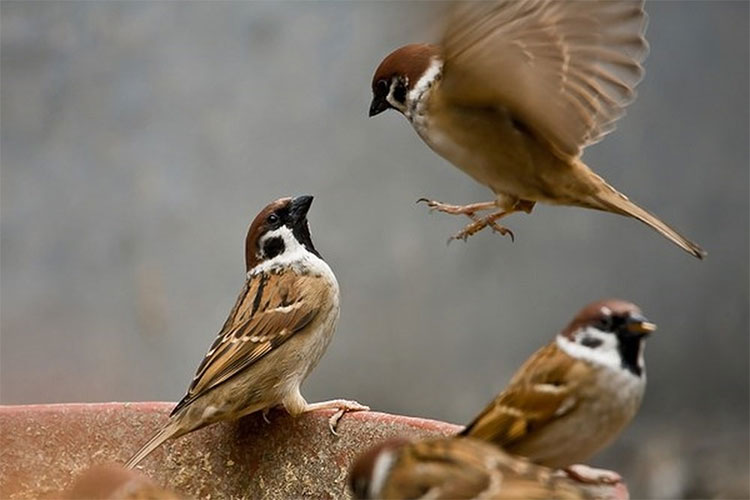The house sparrow has the scientific name Passer domesticus and is a small bird of the sparrow family. Small gray and brown birds on every continent except Antarctica are easy to spot, jumping around towns, pecking food scraps on sidewalks, and occasionally hunting native birds.
The process of natural selection changed the shape of their skulls and gave them the new skill to digest starch, just like dogs.
Historically, house sparrows are mentioned in the Bible, Chinese poetry, and The Canterbury Tales fairy tales. However, until now, sharing the house completely with sparrows to get closer to humans is still a mysterious matter.

Sparrows often appear on the street.
Looking for an answer to the above question, scientist Mark Ravinet and his colleagues gathered information on four main species of the Eurasian family: 46 house sparrows, 43 Spanish sparrows, 31 species of Italian sparrows, and 19 Bactrianus sparrows. They analyzed and decoded DNA and compared the genetic sequences of the house sparrow and their closest wild relative, Bactrianus. The team found that many regions of the house sparrow’s genome actively help them thrive with humans.
The most important sign of house sparrow DNA was found in an area with two genes: one involved in the development of the skull and one that makes the enzyme amylase, the enzyme that breaks down starches. As in humans, dogs and some other animals. These changes help the house to eat artificial foods.
Ravinet’s team plans to study variations in the two genes more closely, as it is not known how these genes changed the appearance and behavior of the bird. The next step is to examine the sparrows’ diet and see if there are any changes in the skull that will increase biting power, which will help the birds to eat the stiffer seeds scattered around the farms.

The analysis also showed that house sparrows and Bactrianus sparrows split up around 11,000 years ago, at the start of the Neolithic Revolution, when agriculture first developed in the Middle East. Evolutionary biologist Samuel Andrew, who studies sparrows at Macquarie University in Sydney, Australia, said this work was an exciting new step for birders, it could answer many questions about how sparrows disperse. to adapt to their different habitats. However, he and Ravinet agree that there may be changes in other genes that were missed in this initial analysis, but which still help birds take advantage of humans.
If you live in a big city, there are a lot of animals around you. Each species itself has a story and a story to tell. And it is human existence that increases the vitality and adaptability of the species.


